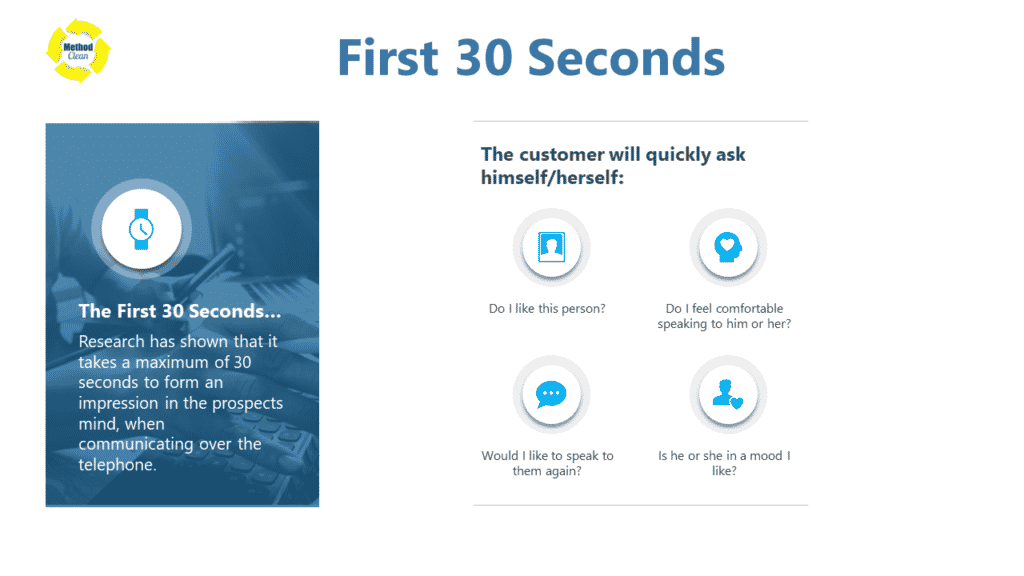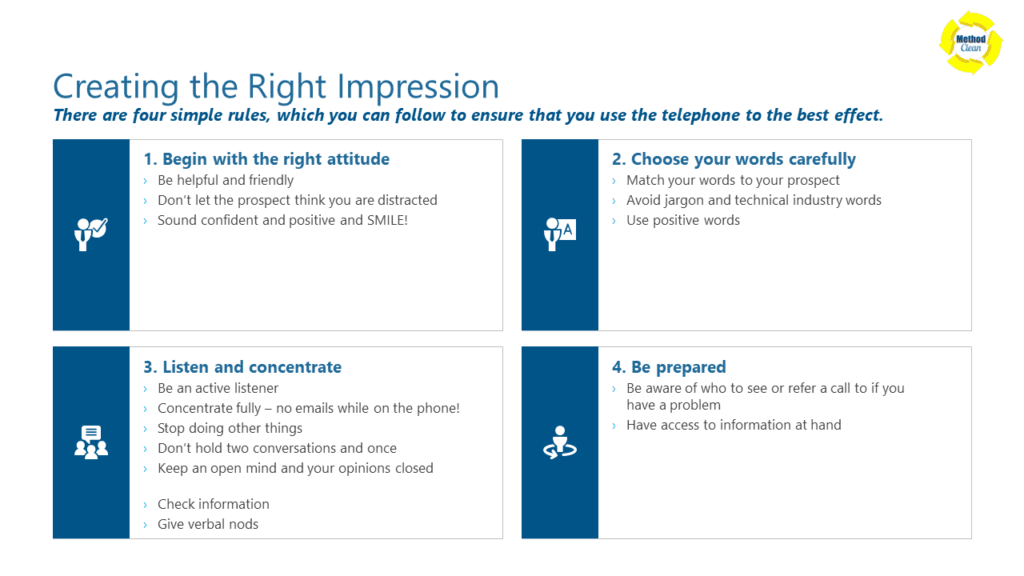Best Telemarketing and Appointment Setting Practices for Cleaning Companies
The use of the telephone as a business-marketing tool still has many advantages, not least of which are cost savings. Commercial cleaning & janitorial service companies still know that it is far more cost effective to have a telemarketing team office bound, rather than expensive salespeople on the road. This does not imply that the days of the sales representative are numbered but it does beg the question of how they can be used more effectively.
In the competitive landscape of commercial cleaning, leveraging every tool to gain an edge is crucial. The telephone, often perceived as a traditional tool, remains a powerhouse for marketing due to its direct and personal nature.
This guide explores advanced telemarketing and appointment setting strategies specifically designed for cleaning companies looking to boost their efficiency and customer base.
The Strategic Advantage of Telemarketing
Cost-Effectiveness: Telemarketing eliminates the need for costly field visits by enabling direct customer engagement from the office. This approach not only reduces overhead but also allows for rapid scaling of marketing efforts without equivalent increases in costs.
Personal Connection: Unlike digital methods, telemarketing provides a human touch that can significantly enhance customer trust and loyalty. This is particularly effective in the cleaning industry where trust forms the foundation of customer relationships.
Key Telemarketing Strategies
1. Developing a Targeted Script
A well-crafted script is the backbone of effective telemarketing. It should be:
- Engaging: Start with questions that not only pique interest but also reveal customer needs.
- Flexible: Allow room for personalization based on the customer’s responses.
- Clear and Concise: Communicate value quickly and clearly to maintain engagement.
2. Training and Empowerment
Equip your team with the skills to succeed:
- Product Knowledge: Deep understanding of your services ensures that telemarketers can confidently address questions and offer relevant solutions.
- Soft Skills Training: Effective communication, active listening, and objection handling are essential skills that empower your team to convert calls into appointments.
3. Utilizing Technology
Incorporate CRM systems to track interactions, automate follow-ups, and analyze customer data for ongoing optimization of your telemarketing efforts. Tools like automatic dialers can also increase call volumes without sacrificing quality.
Words To Avoid In A Telemarketing Script
Enhancing Appointment Setting Effectiveness
1. Optimized Call Timing
Research the best times to contact different types of clients to increase the likelihood of successful interactions. For example, calling business clients early in the morning or just after lunch can yield better results.
2. Follow-Up Strategies
Implement a structured follow-up strategy that includes email or SMS reminders, providing customers with appointment details and preparation steps if necessary.
Overcoming Common Challenges
Handling Objections
Train your team in techniques to gracefully and effectively address common objections, such as pricing and contract terms, by focusing on the value and outcomes of your services.
Non-Visual Cues
Develop skills to understand and react to verbal cues since visual cues are absent in phone conversations. This can involve training in tone and pace modulation to better connect with clients.
Advanced Techniques for Building Client Relationships
1. Personalization
Use the data collected through your CRM to tailor conversations to the specific needs and history of each client, making each interaction feel personal and attentive.
2. Problem Solving
Position your telemarketing team as problem solvers who offer solutions tailored to the unique challenges faced by each client, thereby increasing the perceived value of your services.
Telemarketing remains an indispensable tool for commercial cleaning companies willing to invest in refined strategies and training.
By integrating these advanced techniques, your company can enhance its market presence, improve customer acquisition rates, and ultimately, drive growth and profitability.
Include Testimonials & Industry Specific Examples
Overcoming Telemarketing Challenges: Mastering Non-Visual Communication
Telemarketing’s non-visual nature strips away the rich context provided by body language and visual cues, which play a crucial role in face-to-face interactions. When using the telephone, telemarketers must rely entirely on vocal cues to interpret and respond to customer emotions and reactions. This section outlines how to overcome these challenges to ensure effective communication and customer service.
Understanding the Importance of Vocal Elements
Voice Tone and Quality: The tone of voice conveys emotions more vividly in the absence of visual cues.
A telemarketer’s tone can significantly impact the customer’s perception and emotional response. For instance, a flat, monotonous voice might be perceived as disinterested or unfriendly, whereas a lively, varied tone can engage and reassure the listener.
Pace and Clarity: Speaking too quickly can overwhelm listeners, while too slow a pace might bore them. Clear articulation is crucial as it ensures that your message is understood without visual reinforcement.
Misunderstandings are more likely over the phone, where listeners cannot see lip movements or facial expressions that aid comprehension.
Specific Strategies for Enhancing Phone Interactions
Vocal Exercises: Regular practice can help telemarketers control and enhance their vocal delivery. Exercises might include pitch control sessions, enunciation practice, and pace adjustments to optimize clarity and friendliness.
Scripted Simulations: Using scripts that include emotional cues can help train telemarketers to respond appropriately to different scenarios. Role-playing exercises can simulate real-life situations where they must interpret customer tone and respond effectively.
Feedback Systems: Implementing a feedback mechanism where calls are recorded and reviewed can provide valuable insights into how telemarketers’ voices carry over the phone. Constructive feedback can help individuals understand how they are perceived and how to adjust their vocal delivery for better engagement.
Technology Aids: Advanced telephony solutions can offer voice modulation features that help maintain consistent volume and clarity, enhancing the overall communication experience.
Conducting Effective Voice Assessments
Regular Voice Assessments: Telemarketers should regularly assess their vocal delivery by recording their calls and analyzing them. This can be done through self-assessment or peer review. Key areas to focus on include:
- Speed/Rate: Adjusting speaking speed to match the complexity of the information being conveyed and the customer’s response time.
- Volume: Ensuring the voice is loud enough to be heard clearly without being overbearing.
- Clarity: Practicing precise diction to avoid slurring and mumbling, which can obscure the message.
- Pitch: Using a natural pitch range that feels comfortable and engaging without straining the voice.
- Tone: Developing a friendly, enthusiastic tone that can adapt to reflect empathy, excitement, or calmness as required by the interaction.




